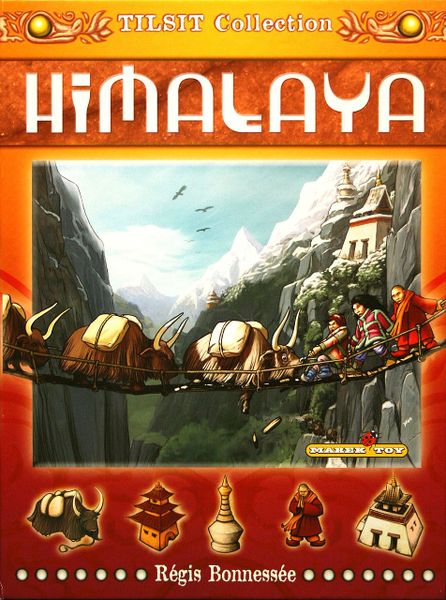Himalaya (2002) Board Game
Himalaya is a strategic board game designed by Régis Bonnessée and published by Tilsit in in 2002. The game is set in the Himalayan region during the Middle Ages, where players take on the roles of rival clans competing for control and influence over the region. With a mix of economic, political, and medieval themes, Himalaya offers a unique gaming experience for 3-4 players.
Game Components of Himalaya
How To Setup Himalaya
To set up the game, players first prepare the game board, which represents the Himalayan mountain range. Each player chooses a token and places it at the starting point on the board. Resource cards and mountain tiles are shuffled and placed within reach of all players. The game also involves setting up the scoring system and ensuring each player has the necessary materials.
Gameplay Mechanics and Game Objective
Player Experience
Playing **Himalaya** involves a mix of strategic planning and luck. Players must balance the risk of pushing forward with the need to manage their resources carefully. The game offers a thrilling experience as players navigate the challenges of climbing a treacherous mountain, making it appealing to those who enjoy adventure and strategy.
Pros
Cons
Personal Thoughts on Himalaya
**Himalaya** is a great fit for players who enjoy strategic games with a strong thematic element. It is particularly suited for those who appreciate the challenges and risks associated with mountain climbing. While it may not be the best choice for casual gamers due to its complexity and length, it is an excellent option for those looking for a more immersive and strategic board game experience.
We are supported by our audience. When you purchase through links on our site, we may earn an affiliate commission, at no extra cost for you. Learn more.

